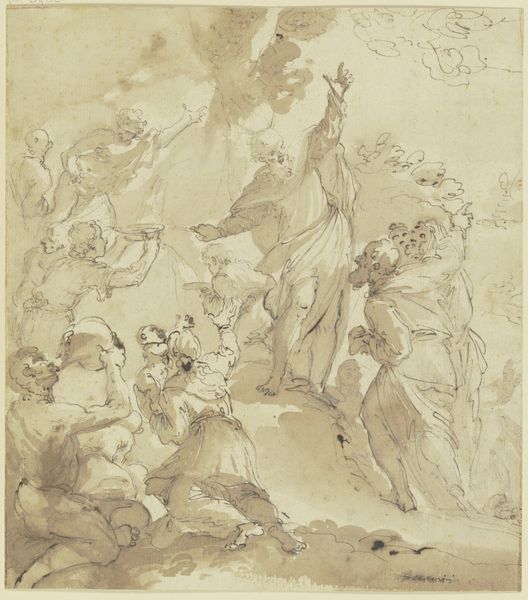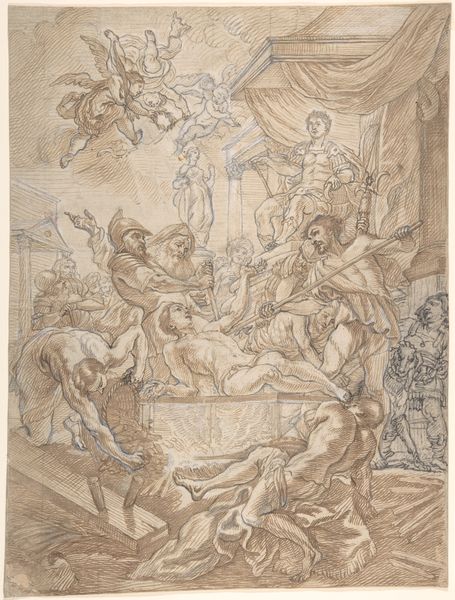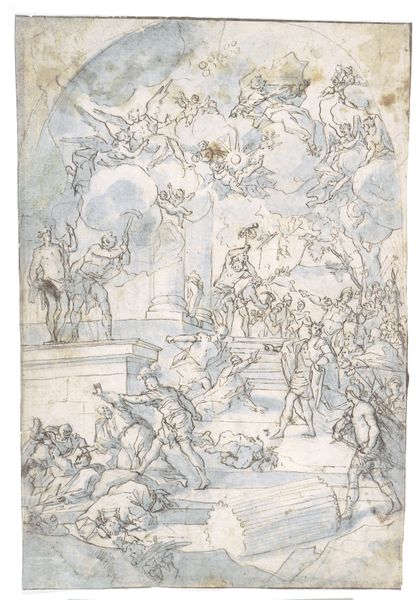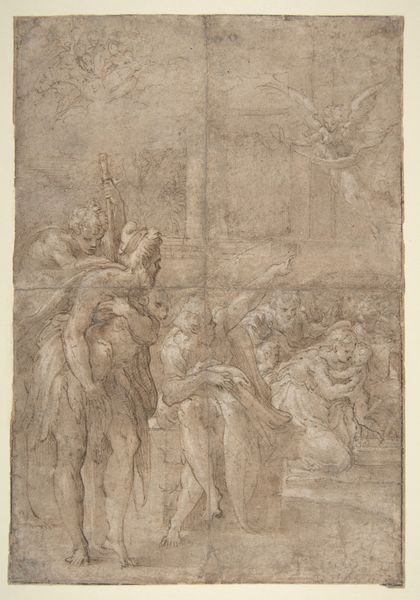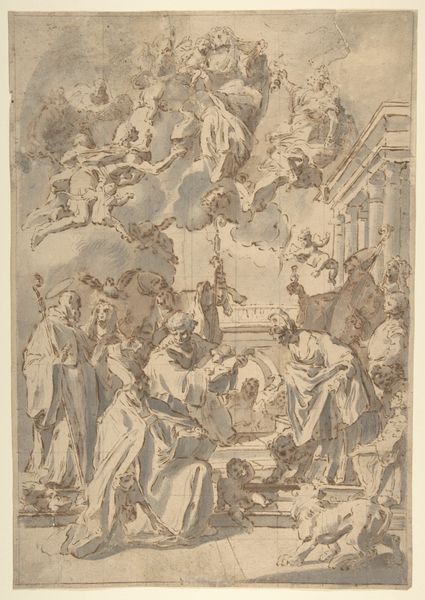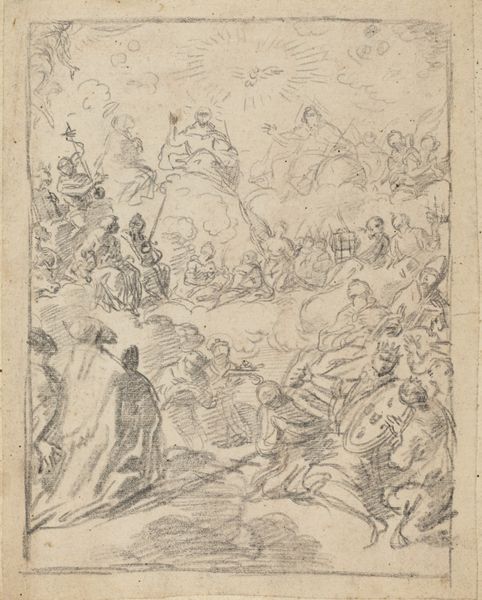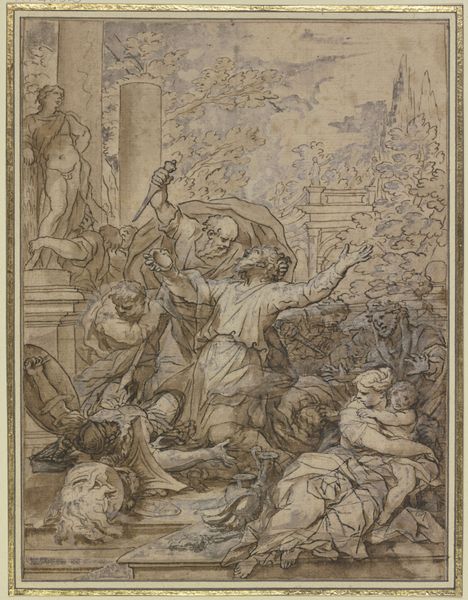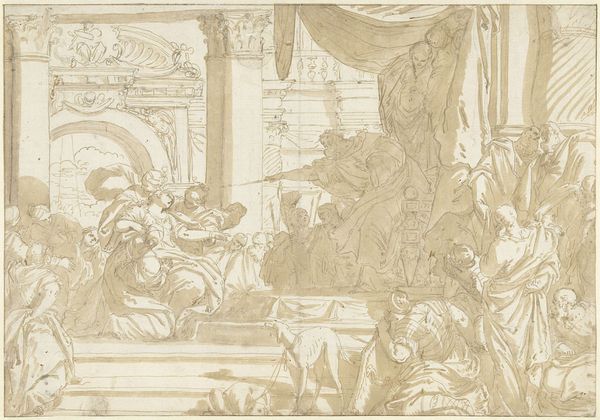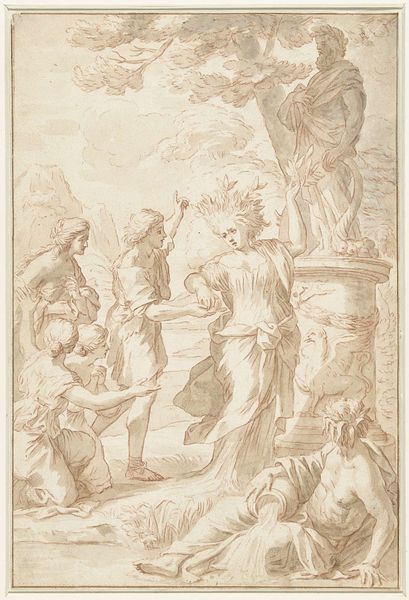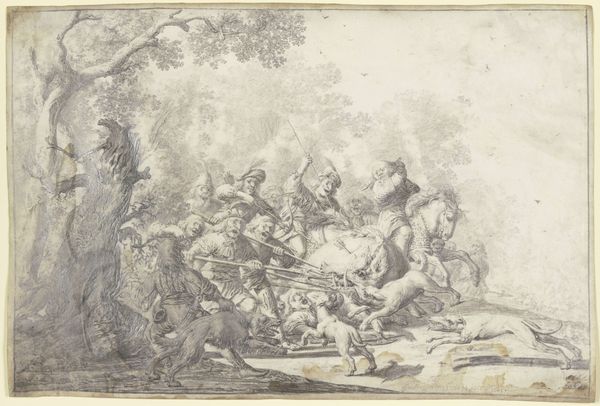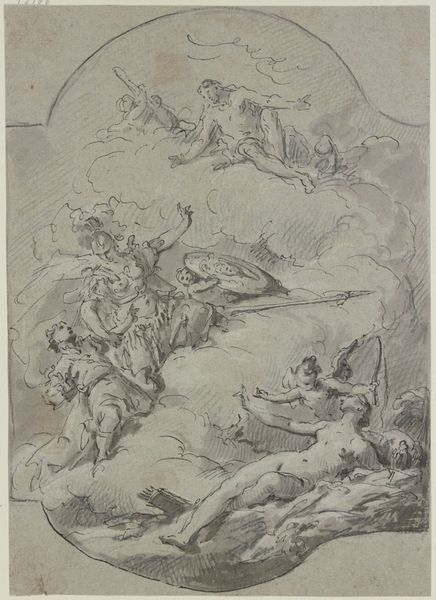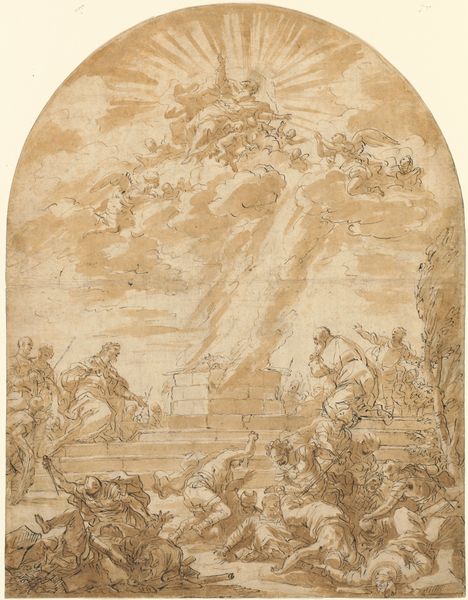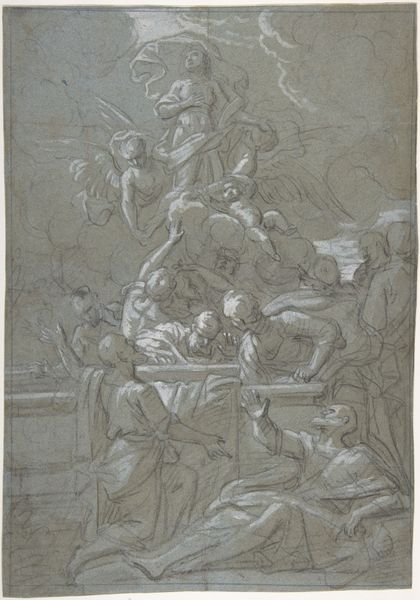
drawing, pencil
#
pencil drawn
#
drawing
#
baroque
#
etching
#
figuration
#
pencil drawing
#
pencil
#
history-painting
Dimensions: height 292 mm, width 249 mm
Copyright: Rijks Museum: Open Domain
Curator: Look at this fascinating drawing, "The Rape of the Sabine Women" by Johannes Voorhout I, believed to have been created between 1657 and 1723. It's rendered in pencil, displaying intricate detail and dynamism. Editor: My initial impression is one of chaotic energy. The composition, with figures swirling across the scene, creates a powerful sense of unrest. The medium itself—pencil on paper—feels delicate, a strange contrast to the violence depicted. Curator: Indeed, the baroque aesthetic is prominent. Note how Voorhout uses line and shadow to create depth, and consider how the formal arrangement—the diagonal thrust of bodies, the receding architectural background—generates movement. The clustered figures create complex patterns and tensions, which convey an intensity of emotional expression. Editor: That intense emotional expression, as you say, hints at a deeply problematic subject. "Rape of the Sabine Women" depicts a founding myth of Rome: Roman men abducting women from the Sabine tribe to populate their new city. This rendering naturalizes violence against women and establishes a troubling legacy for the foundations of power. How can we approach this history? Curator: Perhaps by closely observing the strategic employment of perspective. By positioning the dramatic cluster in the mid-ground and detailing it with the light pencil hatching, Voorhout invites an extended contemplation on this key moment. The medium itself is subservient to the content. Editor: It strikes me as unsettling to focus primarily on artistic achievement when confronted with this subject matter. Voorhout gives us an opportunity to analyze not only his mastery of baroque technique, but also the way he reinforces societal values through imagery. It becomes crucial for modern viewers to adopt a critical stance towards narratives like this, challenging the history. Curator: Yes, considering that, one appreciates Voorhout's dedication to balanced artistic components and intricate depiction of the moment with all of its details even more. Editor: I hope considering this helps us engage with challenging content, bridging it with social commentary to allow for meaningful interaction.
Comments
No comments
Be the first to comment and join the conversation on the ultimate creative platform.
